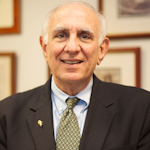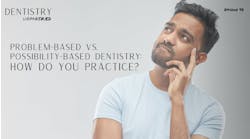Thirteen states have now passed dental therapy legislation despite the overwhelming opposition and political action committee (PAC) dollars of organized dentistry; many other states are pursuing similar legislation.1,2 One would think that many practicing dentists would oppose implementation of dental therapists, but that is not the case!
In a 2016 poll conducted by the National Dental Practice-Based Research Network, funded by the National Institute of Dental and Craniofacial Research, 48% of participating dentists from across the country responded that dental therapists should be allowed to work in their state; 30% said they would be interested in hiring a dental therapist; and 41% said they would increase care to the underserved.3
One can also look at what has happened in Minnesota over the last decade. Organized dentistry strongly opposed the dental therapy legislation passed in 2009. Many years later, Minnesota dentists are eagerly hiring dental therapists, with about 50% of existing dental therapists working in private dental practices.4 Research shows that Minnesota dentists have a much more positive attitude about dental therapists than dentists in other states.5 These dentists realize that dental therapists are not only great for the financial bottom line in their practices, but they also provide a “social good,” since 50% of their patients must be on Medicaid. Such dentists know that dental therapists are not an enemy of dentistry.
Related reading:
- The medical-dental-patient gap: Building relationships for optimal patient outcomes
- The future of oral-systemic health: Dental hygienist breaks new ground treating pediatric cancer patients
Why do we need dental therapists in the United States?
The state of oral health in the US is abysmal. In 2019, only about 50% of children enrolled in Medicaid had a dental visit in that year;6 that is more than 19 million children. In many states, Medicaid has no dental benefits for adults.7 About 25% of adults and children in the US have unfilled cavities.7 There continues to be an increasing number of hospital emergency room visits for preventable dental problems, with over 2.1 million such visits nationally in 2017 at a cost of more than $2.7 billion.8
This is all wasted money. When patients visit an emergency room for dental reasons, they are given antibiotics and pain medication and then told to find a dentist. The underlying problem is left untreated. If patients cannot afford to see a dentist today, they will not be able to afford one tomorrow.
The consequences of limited access and poor oral health
Studies show that poor oral health in children is linked to poor performance in school; you cannot learn if you are in dental pain.8,9 Perhaps the most compelling argument, however, lies in the analysis of the private health insurance industry data, which have shown a consistent pattern over the past 15 years that insured individuals who access dental care have lower overall health-care costs and fewer hospitalizations. With a minimal dental benefit in Medicare, conservative estimates put the net savings at $63.5 billion over 10 years.11
Barriers to accessing dental care
According to the American Dental Association (ADA) Health Policy Institute (HPI), the dental care system in the US is broken.12 However, lack of access to clinical dental services is also a key factor, with more than 60 million people living in federally designated Dental Care Health Professional Shortage areas.13 But the bottom line is that costs and poor oral health literacy are the primary barriers to accessing dental care.14
New evidence-based solution
One proposed solution made by the ADA HPI to fix the broken dental care system is to “Reform the care delivery model—get dentistry out of its care delivery silo. Engage the rest of the health-care system to nudge people into dental care. Rise above scope of practice turf wars fueled by fee-for-service payment.”12 Following this recommendation to reform the care delivery model, there is an evidence-based approach to improving access to quality dental care: bringing dental therapists into the dental team.1
Dental therapy is a 100-year-old profession practiced in more than 50 countries and in the US for more than 15 years, starting in Alaska and now authorized in 13 states.2 There are educational accreditation standards by the Commission on Dental Accreditation, which accredits all dental educational programs in the US.15 All the legislation passed or proposed requires that dental therapists pass a state licensing examination, very similar to that taken by dentists but limited to the procedures within dental therapists’ scope of practice.
Dental therapists perform a small number of basic dental procedures, including preventive procedures, sealants, restorations, and simple extractions, all under the supervision of a dentist. Their real power and role are that they can work under the remote supervision of a dentist (also known as general supervision), allowing them to work in schools, nursing homes, and other alternative settings. It is important to note that 100% of the published evidence, including peer-reviewed scientific publications and case reports, verifies their quality, safety, and cost-effectiveness. An added benefit of their decreased cost of employment means that therapists can help dentists who want to serve Medicaid patients with their lower reimbursements. As stated above, what the dentists in Minnesota have figured out is that dental therapists benefit the financial bottom line of their practices.
Good for patients—and dentists
The scientific literature and evidence from practicing dentists in Minnesota is clear: dental therapists are good for both patients and dentists. Practicing dentists who are interested in this new member of the dental team should realize that the words of the great philosopher Pogo apply to this discussion about dental therapy: “We have met the enemy and he is us.”16 Talk to the leaders of organized dentistry and tell them that dental therapists are good for everyone. Stop wasting our lobbying efforts and PAC dollars by spreading misinformation opposing dental therapy. Dental therapy is not the enemy!
Additional information—including numerous peer-reviewed reports and case studies about quality, safety, cost-effectiveness of dental therapy and its implementation—can be found on the following sites:
- National Partnership for Dental Therapy
- Minnesota Department of Health Dental Therapy files
- Community Catalyst
- Pew Trusts Dental Campaign
- National Coalition of Dentists for Health Equity
Disclosure: Please note that the opinions I share in this article are my own and do not necessarily represent the official viewpoints of any organization.
Editor's note: This article appeared in the July 2022 print edition of Dental Economics magazine. Dentists in North America are eligible for a complimentary print subscription. Sign up here.
References
- Simon L, Donoff RB, Friedland B. Dental therapy in the United States: are developments at the state level a reason for optimism or a cause for concern? J Public Health Dent. 2021;81(1):12-20. doi:10.1111/jphd.12388
- Catalanotto FA. In defense of dental therapy: an evidence-based workforce approach to improving access to care. J Dent Educ. 2019;83(2 Suppl):S7-S15. doi:10.21815/JDE.019.036
- Quick poll results: dentists disagree on role of dental therapists. The National Dental Practice-Based Research Network. December 2016. Accessed May 5, 2022. https://www.nationaldentalpbrn.org/wp-content/uploads/2020/05/03288405-7c20-4fd5-b0bb-15d4e932bbe9.pdf
- Dental therapist (DT) and advanced dental therapists (ADT). Minnesota Department of Health. Accessed May 5, 2022. https://www.health.state.mn.us/facilities/ruralhealth/emerging/dt/index.html
- Annual EPSDT reporting using the form CMS-416. Early and periodic screening, diagnostic, and treatment. Medicaid. Accessed October 30, 2020. www.medicaid.gov/medicaid/benefits/epsdt/index.html
- National Oral Health Surveillance System (NOHSS). Division of Oral Health. National Center for Chronic Disease Prevention and Health Promotion. Centers for Disease Control and Prevention. Updated April 1, 2015. Accessed October 30, 2020. http://www.cdc.gov/oralhealthdata/
- Gupta N, Yarbrough C, Vujicic M, Blatz A, Harrison B. Medicaid fee-for-service reimbursement rates for child and adult dental care services for all states, 2016. American Dental Association. Health Policy Institute. April 2017. https://www.ada.org/-/media/project/ada-organization/ada/ada-org/files/resources/research/hpi/hpibrief_0417_1
- Emergency department visits for dental conditions—a snapshot. American Dental Association. Health Policy Institute. Accessed October 30, 2020. https://www.ada.org/-/media/project/ada-organization/ada/ada-org/files/resources/community-initiatives/action-for-dental-health/emergency-department-referrals/ed_referral_hpi_infographic.pdf
- Ruff RR, Senthi S, Susser SR, Tsutsui A. Oral health, academic performance, and school absenteeism in children and adolescents: a systematic review and meta-analysis. J Am Dent Assoc. 2019;150(2):111-121.e4. doi:10.1016/j.adaj.2018.09.023
- Rebelo MAB, Rebelo Vieira JMR, Pereira JV, Quadros LN, Vettore MV. Does oral health influence school performance and school attendance? A systematic review and meta-analysis. Int J Paediatr Dent. 2018. doi:10.1111/ipd.12441
- Alfano MC. The economic impact of periodontal inflammation. In: Glick M. The Oral-Systemic Health Connection: A Guide to Patient Care. 2nd ed. Quintessence Publishing; 2019:357-368.
- Vujicic M. Our dental care system is stuck: and here is what to do about it. J Am Dent Assoc. 2018;149(3):167-169. doi:10.1016/j.adaj.2018.01.006
- HPSA shortage areas. Health Resources & Services Administration. HRSA Data Warehouse. Updated May 24, 2022. https://data.hrsa.gov/topics/health-workforce/shortage-areas
- Gupta N, Vujicic M. Main barriers to getting needed dental care all relate to affordability. American Dental Association. Health Policy Institute. November 2019. https://www.ada.org/-/media/project/ada-organization/ada/ada-org/files/resources/research/hpi/hpibrief_0419_1.pdf
- Accreditation standards for dental therapy education programs. Commission on Dental Accreditation. February 6, 2015. Accessed May 5, 2022. https://coda.ada.org/~/media/CODA/Files/dental_therapy_standards.pdf
- This day in quotes. April 22, 2022. http://www.thisdayinquotes.com/2011/04/we-have-met-enemy-and-he-is-us.html







